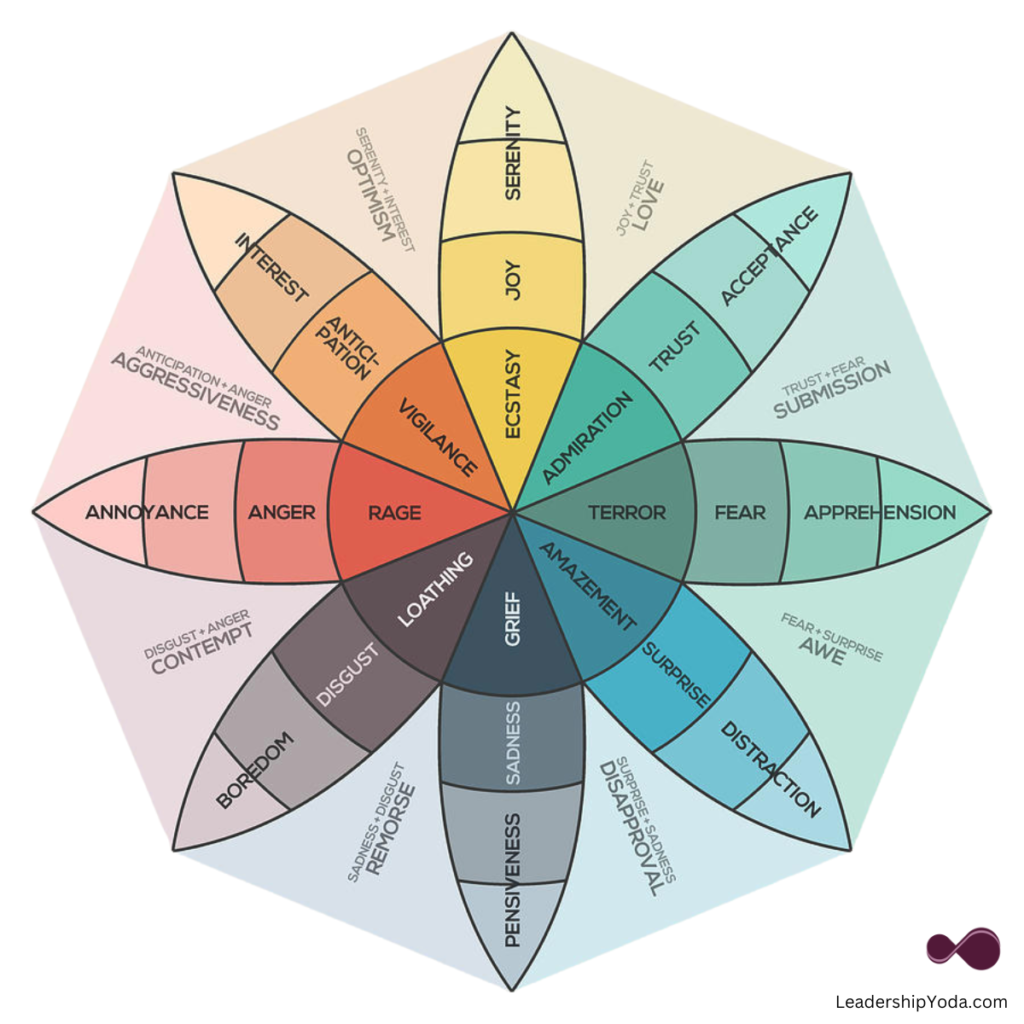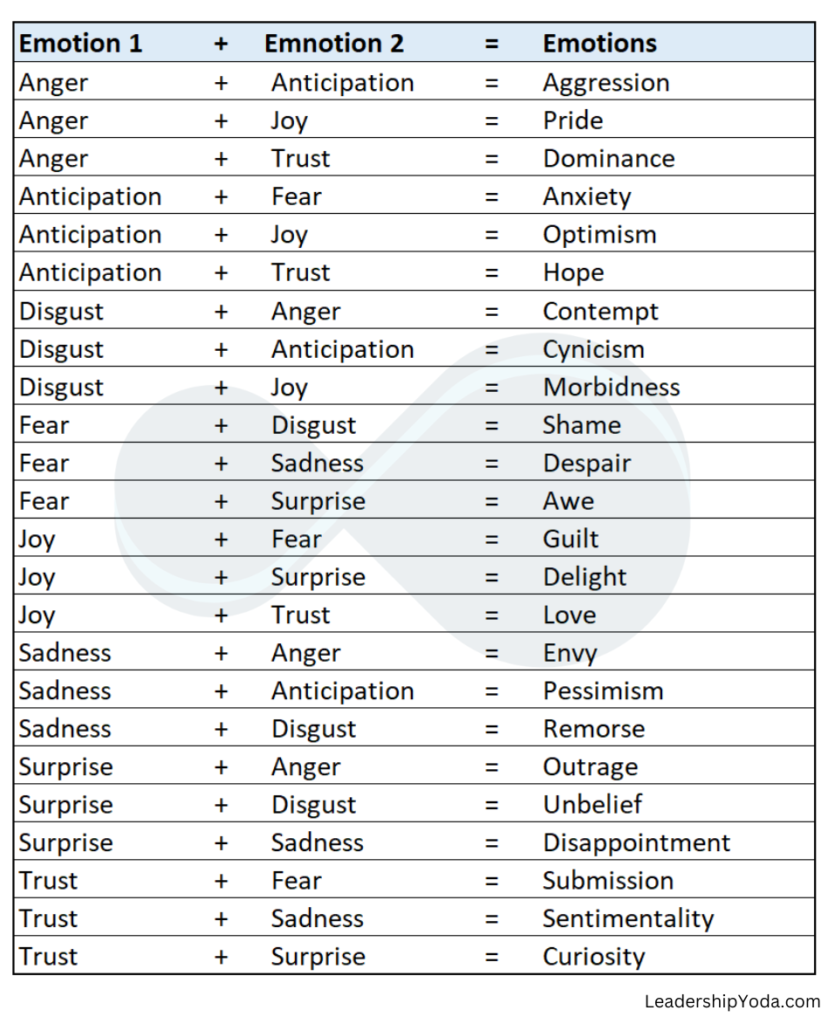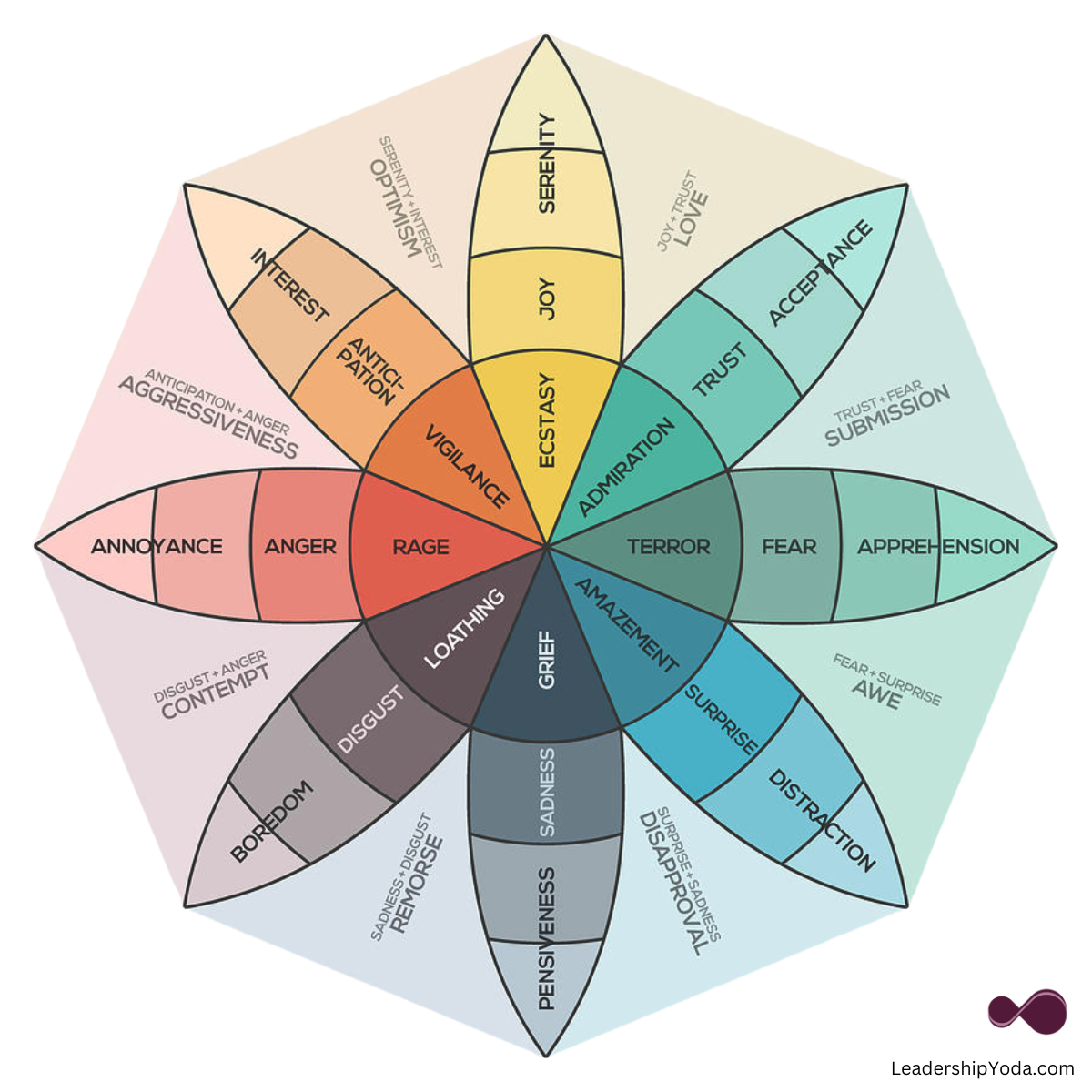Self-awareness, the first quadrant of Emotional intelligence, is the ability to perceive your emotions in a given moment. Understanding emotions, your feelings and those of others are one of the core characteristics of Emotional Intelligence. Better relationships, communication skills, and coping mechanisms can all result from a more profound knowledge of emotions and self-awareness. In this article, you will learn about basic emotions and why it is sometimes challenging to pinpoint feelings/emotions, and finally, we will look at the Wheel of emotions tool.
Let’s start with the simple definition of Emotions – “a strong feeling deriving from one’s circumstances, mood, or relationships with others.”
Too many emotions
According to a study by The Greater Good Science Center, there are at least 27 distinct non-composite emotions. In addition, researchers have identified over 34,000 distinguishable emotions. So it is no surprise that people struggle to describe their feelings & emotions precisely.
“Anybody can become angry, that is easy; but to be angry with the right person, and to the right degree, and at the right time, and for the right purpose, and in the right way, that is not within everybody’s power, that is not easy.”
Aristotle
While it is easier to identify a feeling of joy, sadness, or anger, there is a vast spectrum of emotions that are both complex & composite thus, difficult to pinpoint. This prevalence and complexity make achieving a complete awareness of emotions a challenge.
Dr Plutchik’s Wheel of Emotions

To solve this challenge and help recognise and understand emotions effectively, Dr Robert Plutchik created a tool now called the “Wheel of Emotions”. He identified eight (8) primary emotions: trust, fear, surprise, sadness, disgust, anger, anticipation and joy. He then grouped these eight most basic emotions into their polar opposites. According to him, these primary emotions form the basis for all other composite emotions. He also recognised the duality of emotions, i.e. each emotion having a polar opposite, for instance, joy and sadness.
SADNESS << is opposite of >> JOY
He claimed that combinations of primary emotions produce new emotions; for example, guilt is a combination of joy & fear, and similarly, love is joy & trust combined.
GUILT = is a combination of JOY + FEAR

He noticed emotions vary in intensity, and this varying intensity of emotions produces a diverse amount of emotions such as:
DISLIKE => DISGUST => LOATHING

Elements of the Wheel of emotions
Colours, layers and relationships
The eight emotions are grouped in groups of related emotions based on colours. Primary emotions are kept in the second concentric circle. Most intense emotions are at the core centre of the wheel, and the intensity of emotions diminishes as you move outwards. For instance, at the centre of the wheel, the primary emotion changes from anger to rage and so on. Similarly, anger diminishes to annoyance, and fear reduces to anticipation and so on. The polar opposite emotions are across from each other, e.g. Joy and Sadness. The emotions that mix the two primary emotions are depicted between petals using softer colours. These mixed emotions like love, optimism, contempt, awe etc., are shown in between the leaves (spokes) of the wheel.
In the end, I will leave you with this beautiful thought:
All that we are arises with our thoughts. With our thoughts, we make the world.
Buddha
References:
Understanding Emotions (verywellmind.com)
